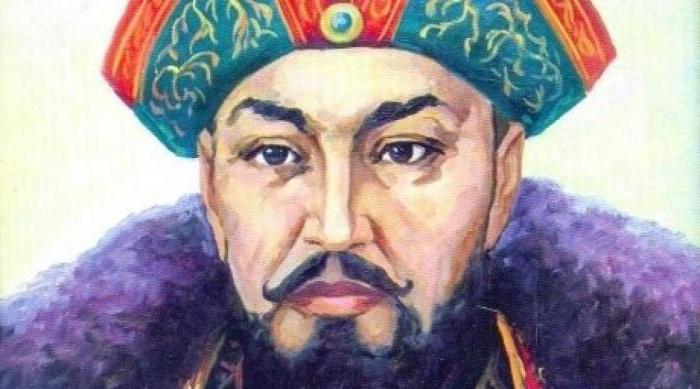Accession of Kazakhstan to Russia began in the first half of the 18th century. It took place in several stages and lasted for a century. Both countries were interested in developing relations and rapprochement, however, there were geopolitical factors that impeded the accession process.
Background
At the beginning of the 18th century, Russia was becoming an empire and was rapidly building up its military power. Its influence on neighboring states increased. The geographical location naturally made Russia a profitable ally. Its territory is adjacent to the Kazakh lands. In the immediate vicinity of the border were large Russian cities, which contributed to the development of trade relations. All these circumstances forced the Kazakh khans to think about the transition under the rule of an influential and powerful empire.
Russia's interest in gaining control over neighboring territory was explained by the desire to secure its southern borders. In addition, the empire needed to protect important trade routes that went through the lands of Kazakh khans to Central Asia.
Protectorate Negotiations
Peter I was repeatedly mentioned about the possibility of Kazakhstan joining Russia. He called this country "the key to Asia." In 1717, one of the Kazakh khans turned to Peter I with a proposal to transfer to the citizenship of the empire in exchange for the tsar's military assistance in the fight against Dzungaria (the Mongol-speaking steppe state). But Russia at that time was involved in a difficult and prolonged confrontation with the Swedish king Charles XII, which took all its strength and resources.
Khans Abulkhair and Ablai
Empress Anna Ioannovna for the first time in history established a protectorate over part of the Kazakh people. The Khan of the Younger Zhuz (tribal union) named Abulkhair asked her for protection from the devastating raids of the Dzungars and threats from the Chinese state of Qing. The empress agreed to provide military support if the Kazakh ruler swore allegiance to her. An agreement on the establishment of a Russian protectorate over the lands of the Younger Zhuz was signed in 1731. Abulkhair decided to take this step in an effort to rise above the rest of the Kazakh khans. Soon his example was followed by the ruler of another tribal union. Khan of the Middle Zhuz Ablai appealed to the Empress with a request to establish a protectorate over his territory. The Kazakhs, who received royal protection, pledged to promote the political and commercial interests of Russia. Only the Elder Zhuz, who was subordinate to the Kokand khan, did not fall under the rule of the empress.

The intervention of the Russian army
In 1741, the Dzungars embarked on another conquest in the Kazakh lands. Located in the border areas, the Russian army offered them vigorous resistance and forced them to retreat. Since that time, the Dzhungars had to reckon with the presence of a new strong rival in the region and exercise caution. The first consequences of Kazakhstan's accession to Russia took on a real shape. The expansion to the East, which Peter the Great was thinking about, began to be put into practice.
The weakening of the influence of St. Petersburg
In 1748, Khan Abulkhair, one of the main supporters of joining the Russian Empire , died . Dzungaria was defeated and almost completely destroyed by the Chinese state of Qing. This has changed the balance of power in the region. The Qing Dynasty has become a serious threat. After the Chinese army inflicted several defeats on the Kazakhs, the khan of the Younger Zhuz admitted his vassal dependence on Beijing. The royal protectorate has become a formality. The history of Kazakhstan's accession to Russia has entered an unfavorable phase. However, the Chinese expansion was unsuccessful. Khan Ablai led the fight against the Qing commanders and managed to restrain their onslaught.
Protectorate recovery
A significant part of the Junior and Middle Zhuzes supported the rebellion raised by Emelyan Pugachev. This aroused the desire of the tsarist government to return this region to its control. In the era of Catherine II, the process of accession of Kazakhstan to Russia resumed. The integration policy was implemented through administrative reforms. After the death of Ablai Khan’s power began to bear a symbolic character. Management of zhuzes gradually passed into the hands of St. Petersburg officials. On the Kazakh side, an armed struggle for independence unfolded, which continued until the middle of the 19th century.
The final entry into the empire
In 1873, three zhuzes were divided into six regions, each of which was controlled by a military commandant. This was the completion of the accession of Kazakhstan to Russia. Six new regions became part of the provinces of the empire. Many years of armed resistance could not prevent the onset of this event. The accession of Kazakhstan to Russia turned out to be a historical inevitability.